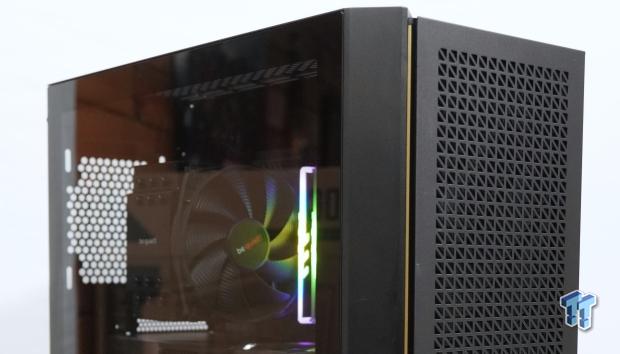
The Bottom Line
Pros
- + Stylish ventilated metal front panel
- + 4mm tempered glass side panel
- + Support for two 360mm radiators, simultaneously
- + Three included PWM fans
- + No RGB
Cons
- - None
Should you buy it?
AvoidConsiderShortlistBuyIntroduction, Specifications, and Pricing
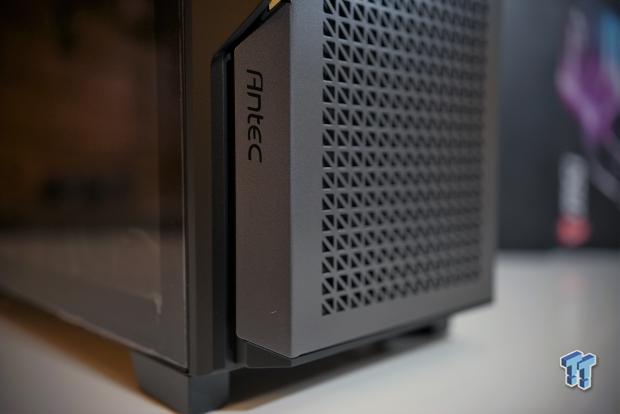
Back in November 2022, I looked at Antec's DP505 mid-tower case, and I loved it. Now Antec has sent out a new case in its P series, so thanks to Antec for sending out the P20C for me to look at. I immediately noticed that the P20C felt familiar, and I was right. The P20C uses the exact same core as the DP503 and DP505, as well as Azza's Legionaire.
Since the core is the same as the older cases, would that mean it's the same? Well, not really. Let's find out now!

Packaging
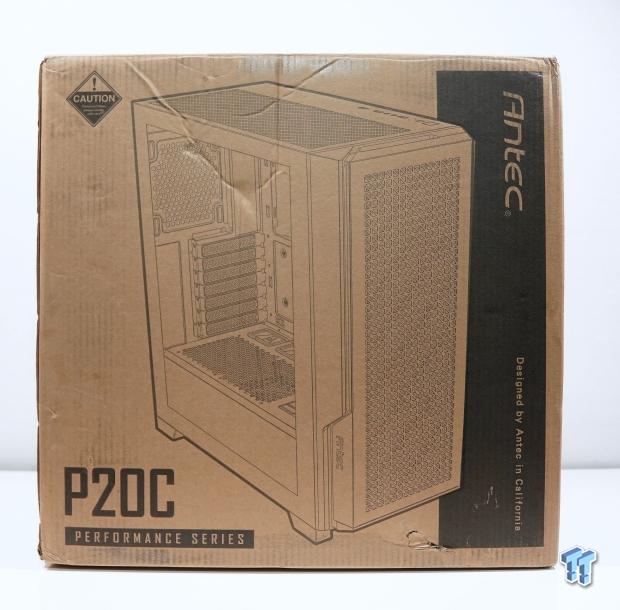
The packaging on the Antec P20C is in the standard brown cardboard box with lettering and pictures on the sides.
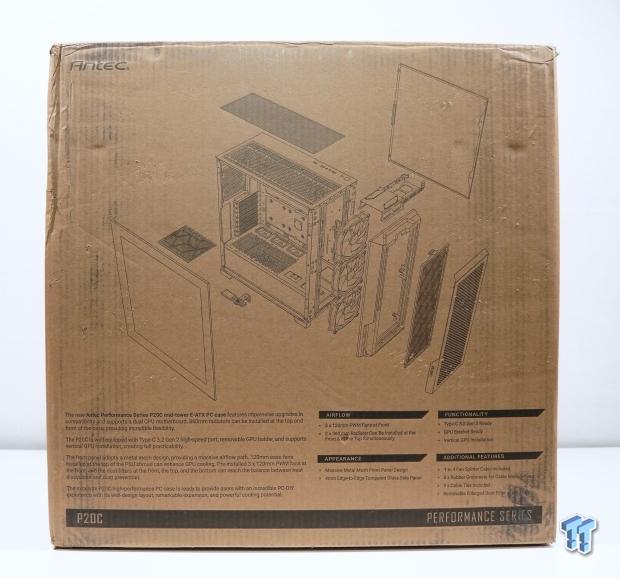
The backside of the box is a blown-out image of the case and its included accessories.
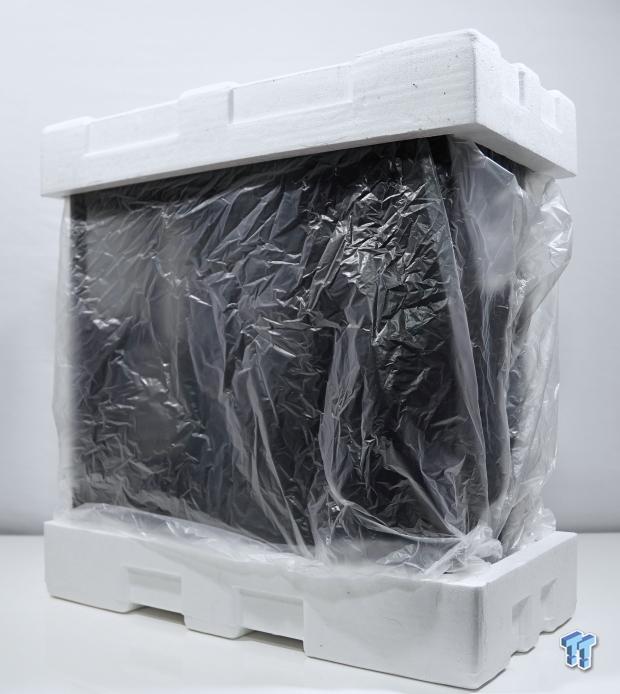
Pulling the Antec P20C out of its cardboard coffin, there is another standard in the industry, two styrofoam protective end pieces with the P20C being wrapped in a plastic bag.
Outside the Antec P20C
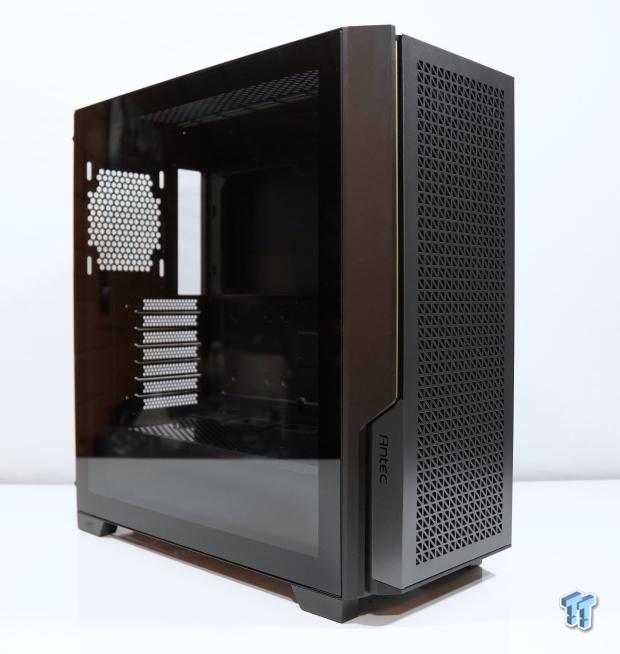
At first look, the Antec P20C is shaping into a decent high-airflow mid-tower case. The front has a symmetrical double triangle pattern that still allows for high airflow.
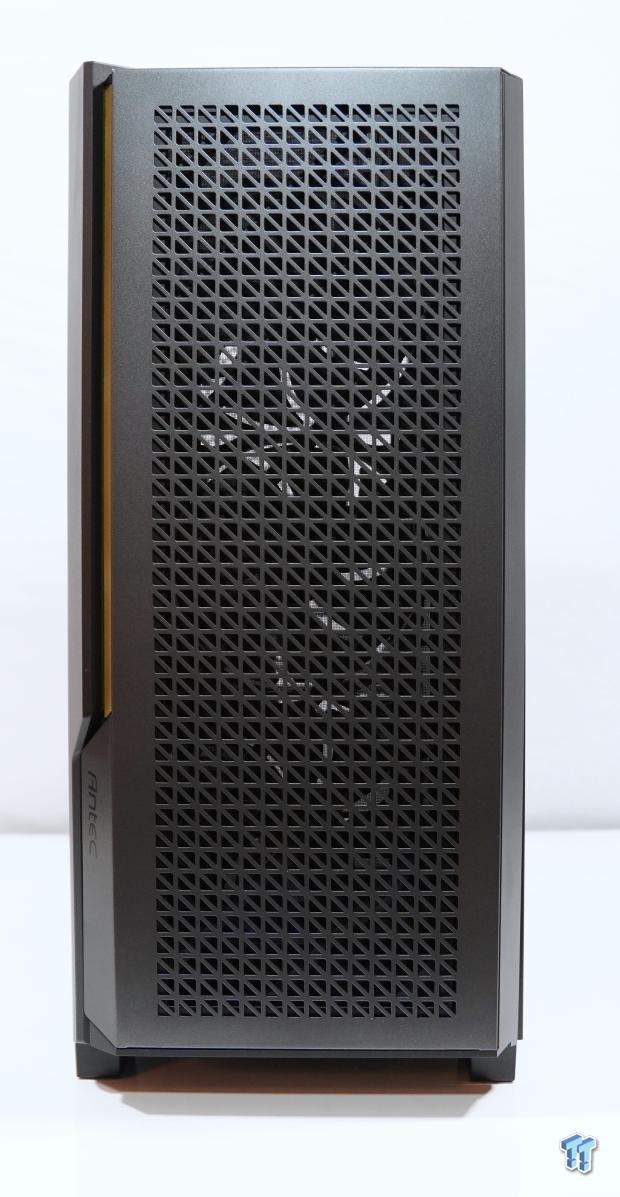
A closer shot of the front panel. Behind is a finer mesh fan filter that should catch dust nicely and be easy to clean.
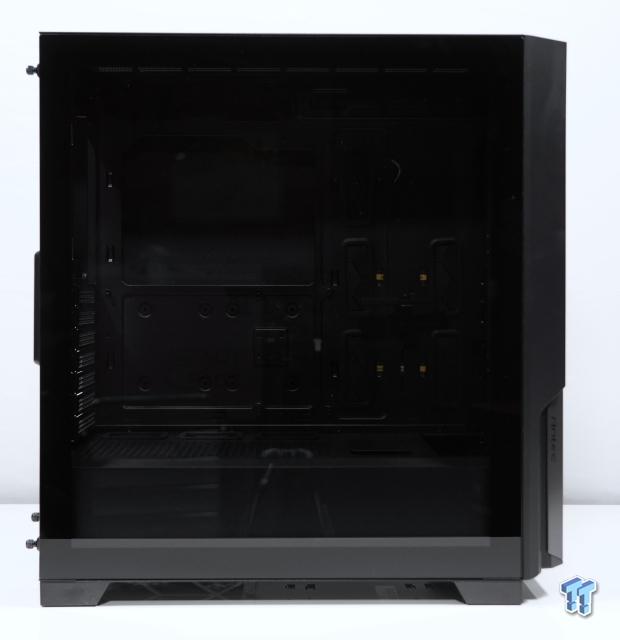
The tempered glass side panel of the P20C has a slight tint. Two captive thumbscrews secure the tempered glass to the P20C.
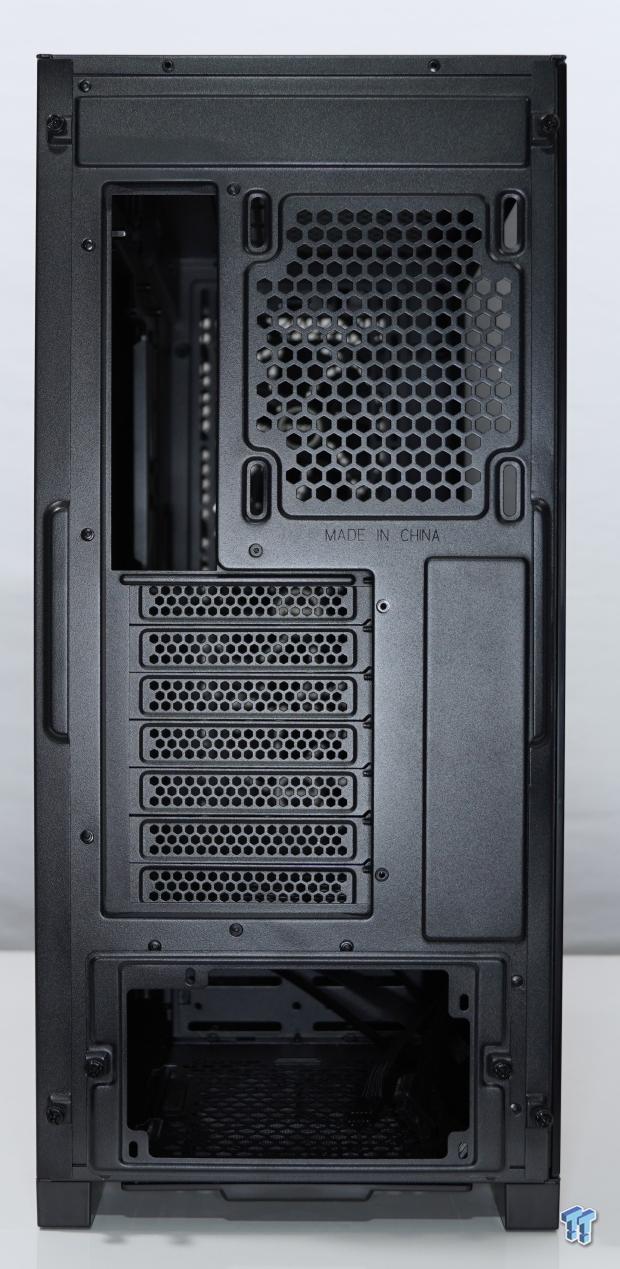
The back cable side of the P20C has seven PCIe slots, which have no spacing between them, making a vertical GPU mount possible. The PSU mount is also removable, simplifying installation.
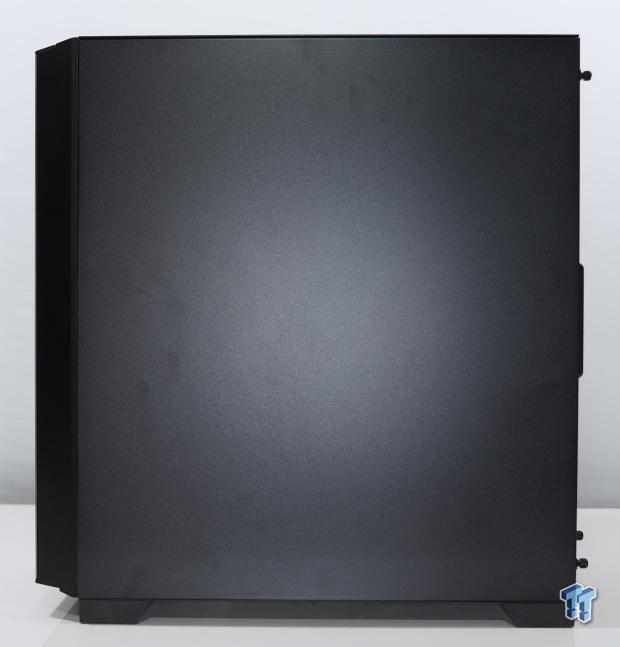
The back side panel covering most of the cabling is plain and again is held on with two captive thumbscrews.
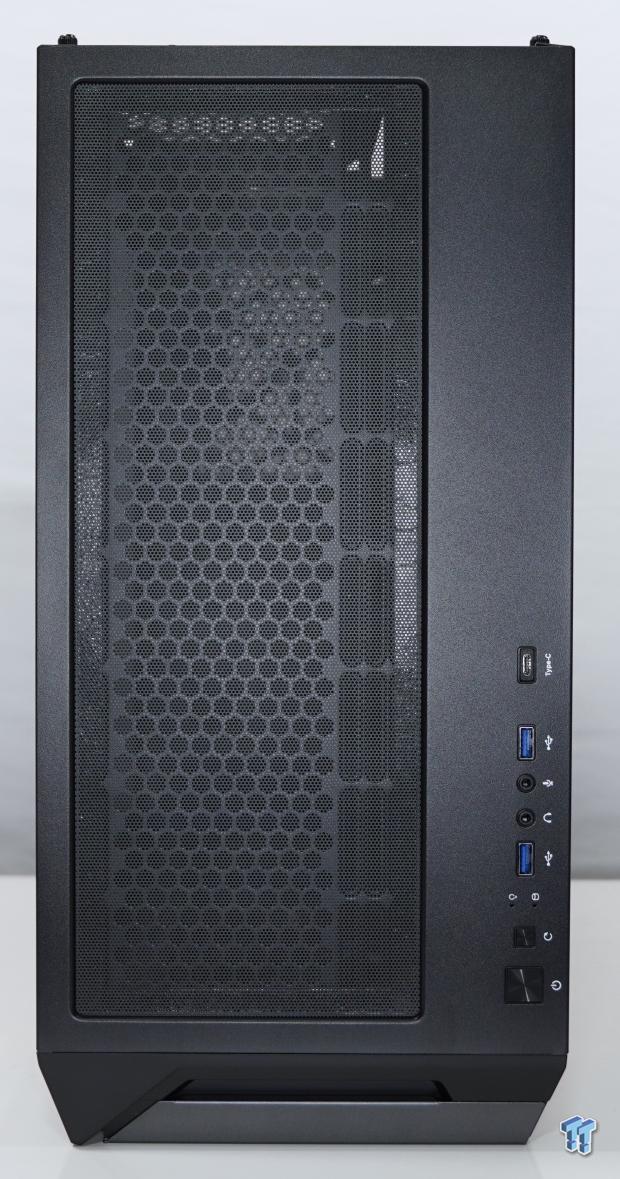
The top of the P20C has a full-length fan filter for exhausting, which is kind of pointless, up to three 120mm or two 140mm fans, including corresponding radiators up to 50mm in total fan/radiator thickness.
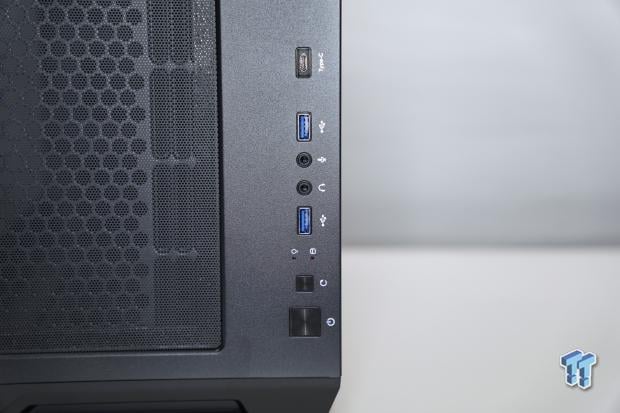
The front I/O includes a square power button, a smaller square reset button, two system indicator lights, a blue USB 3.0 Type-A port, 3.5mm headphone and mic jacks, another blue USB 3.0 Type-A port, and lastly, a Type-C that runs at USB 3.2 Gen2 x1 speeds.
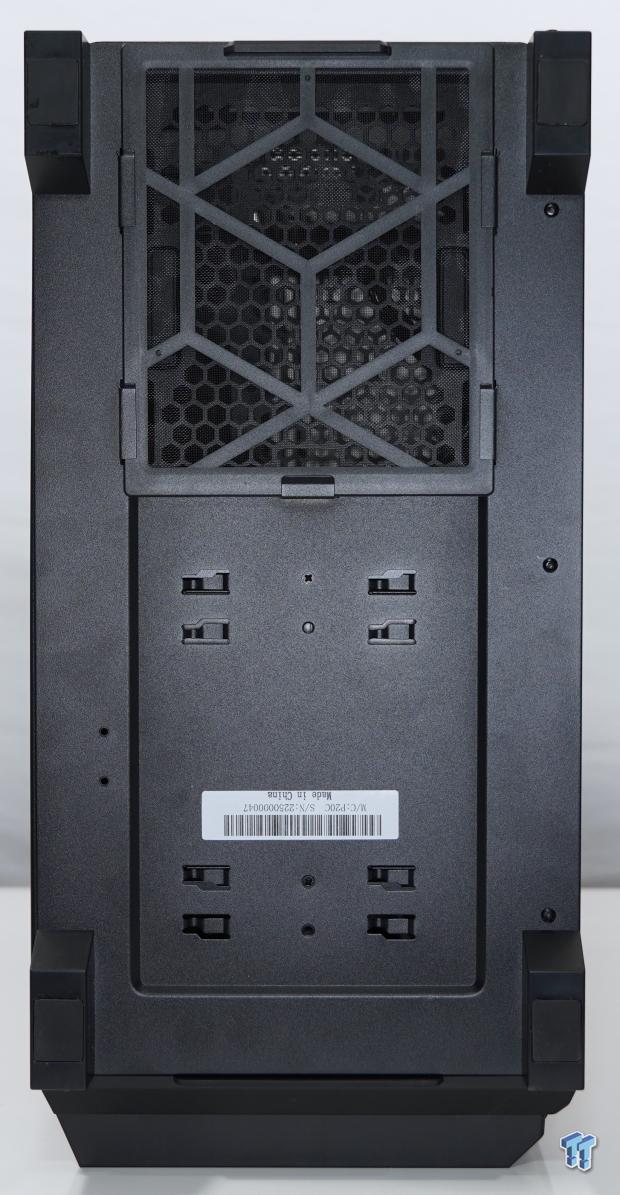
The bottom of the Antec P20C shows an included fan filter for the PSU and four feet with ample rubber pads to prevent slippage.
Inside the Antec P20C
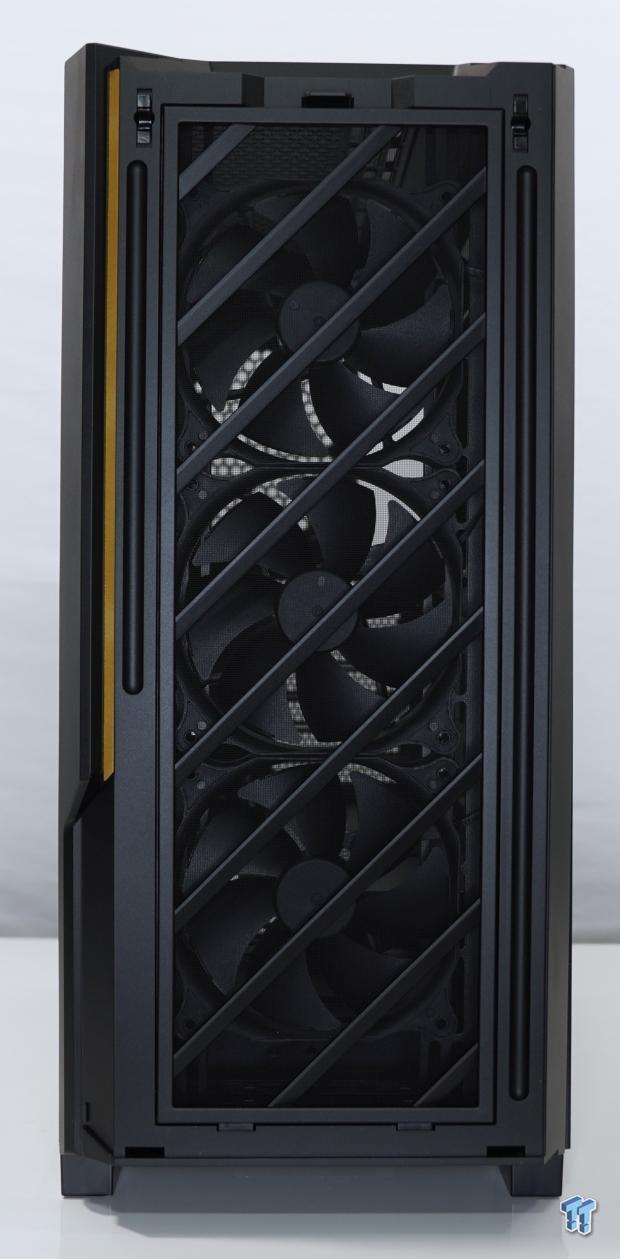
Moving inside the P20C, removing the front panel section reveals the included fine mesh fan filter. Here a filter makes sense as this is used as an air intake.
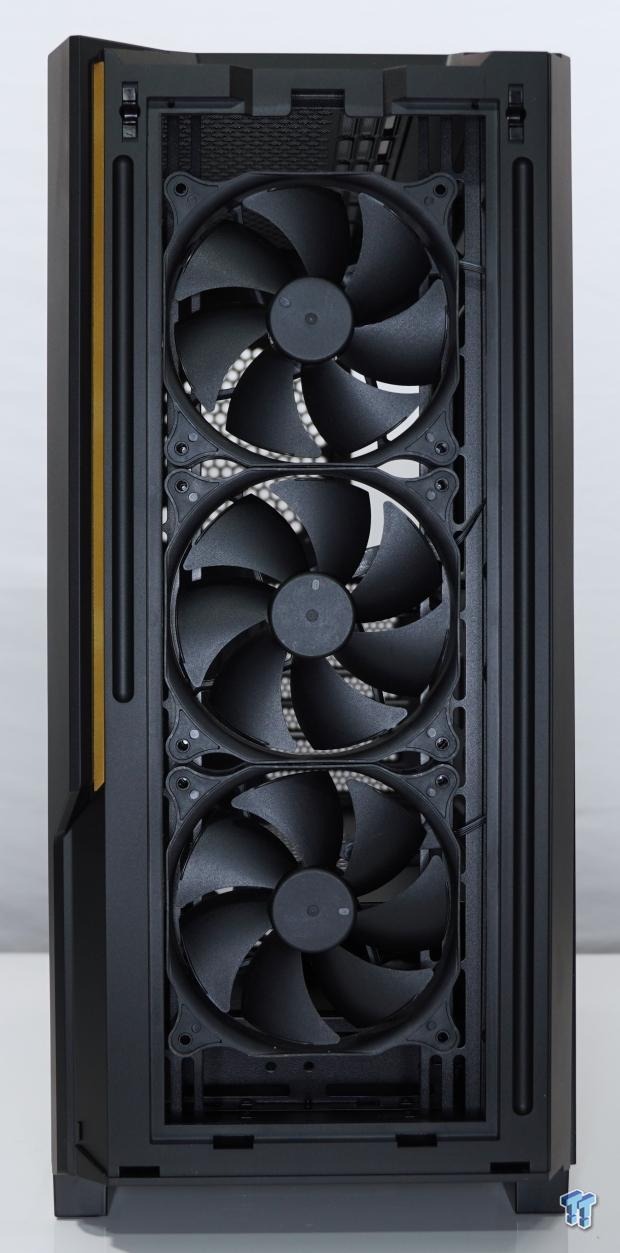
Removing the fan filter shows the three included 120mm PWM fans that are pre-installed. Thicker radiators are supported up to 360mm with a thickness of 65mm or less. This location also supports up to three 140mm fans but no support for 420mm radiators.
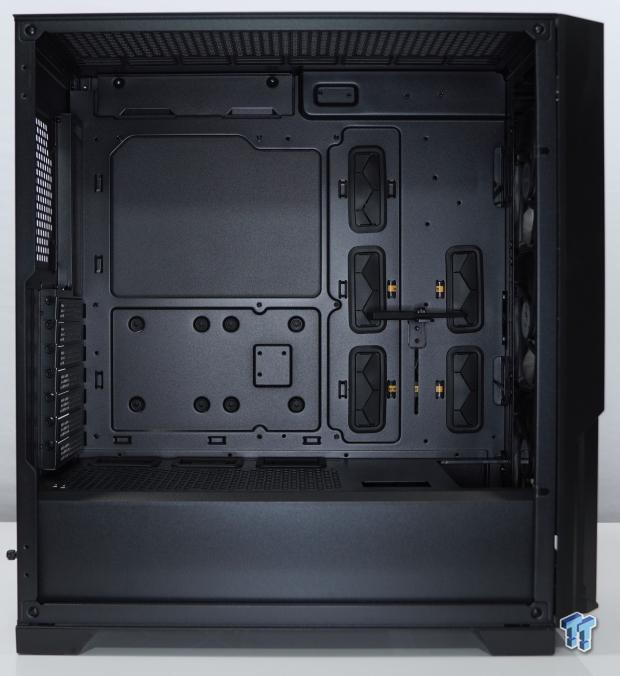
The main chamber of the Antec P20C is virtually identical to its Antec brethren, which isn't a bad thing.
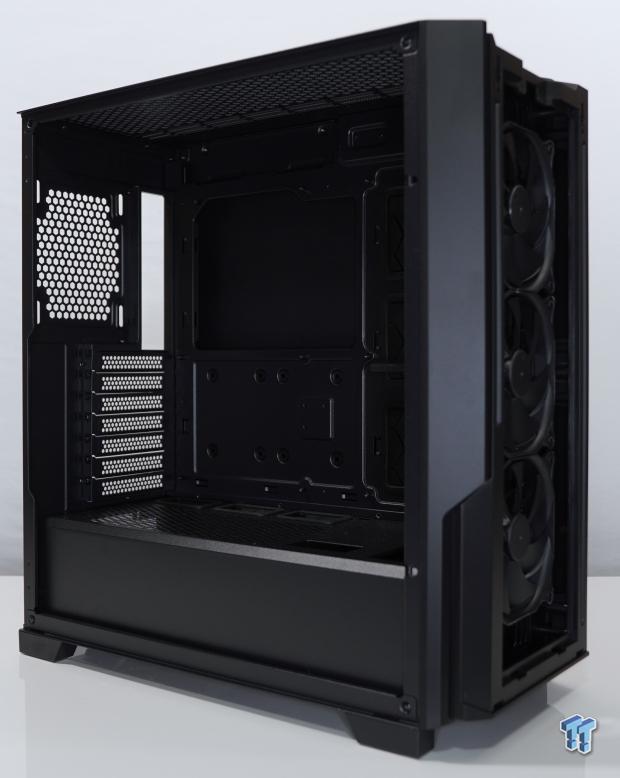
Another view of the internal chamber of the Antec P20C, all blacked out.
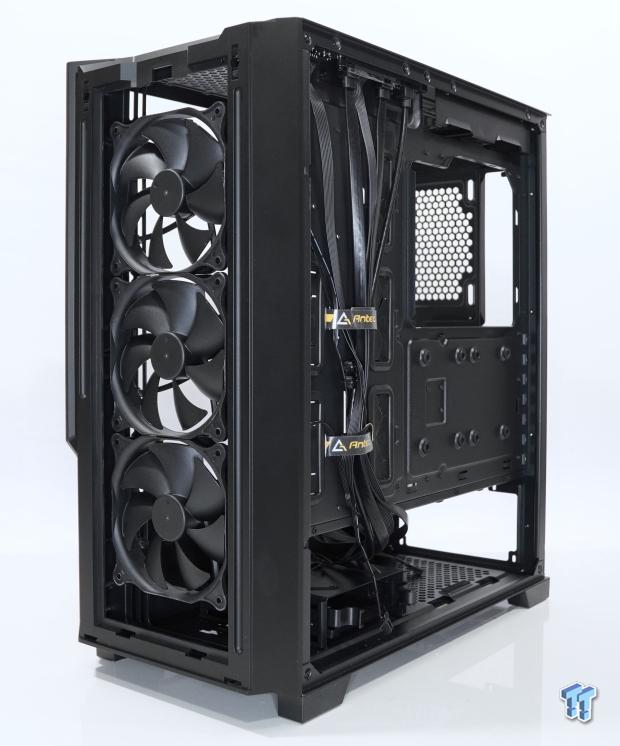
The three PWM 120mm fans Antec includes on the P20C are not labeled with a model number.
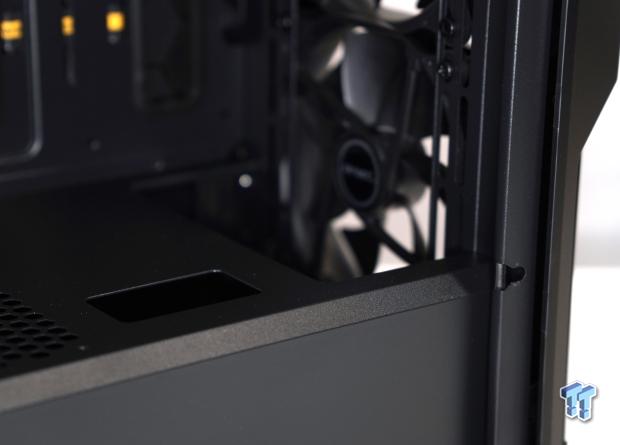
While Antec says nothing on their website about front radiator clearance, the opening in the front measures about 6.5cm or 65mm. Also shown is a cable passthrough for GPU cabling.
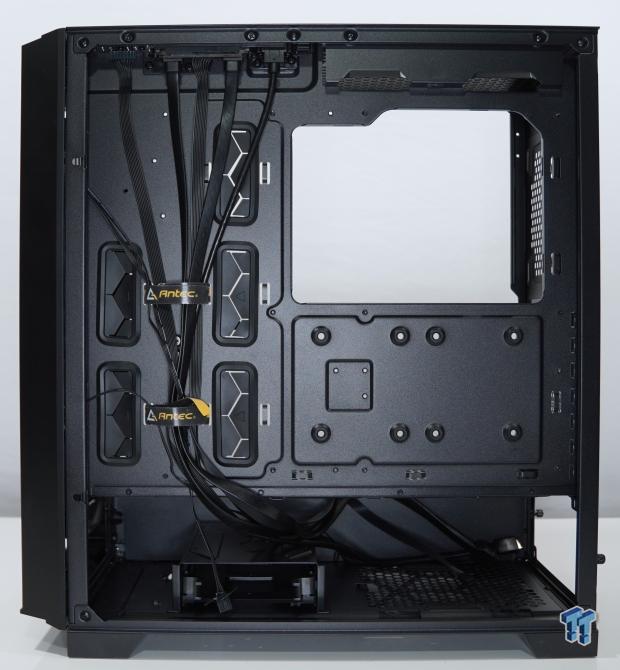
The back cable management area again is promising, just like the DP505 and DP 503 were. Supported on the back wall are two mounts for 2.5" SSDs or HDDs. The basement houses a single 3.5" HDD drive sled mount with the ability to mount a 2.5" SSD or HDD on the top, which can be removed to allow for longer PSUs.
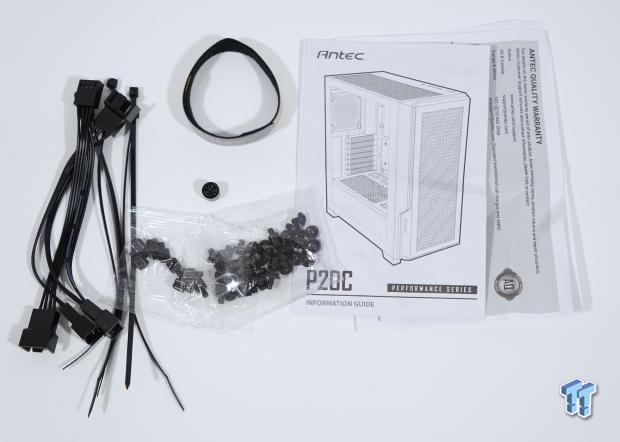
The accessories that Antec included are basic but get the job done. Warranty information, instruction manual, cable ties, three-headed PWM fan splitter, a bag of various screws and standoffs, and an additional Antec-labeled cable strap.
Test System, Installation, and Finished Product
- Motherboard: GIGABYTE Z690 AORUS PRO (INTEL Z690) - Buy from Amazon
- CPU: Intel Core i5 12600K - Buy from Amazon
- Cooler: Fractal Design Celsius+ S36 Dynamic - Buy from Amazon
- Memory: Patriot Viper Venom DDR5 5600 RGB - Buy from Amazon
- Graphics Card: NVIDIA RTX 3090 Founders Edition - Buy from Amazon
- Storage: Corsair MP600 PRO XT Gen4 PCIe x4 NVMe M.2 SSD - Buy from Amazon
- Case: Antec P20C - Buy from Amazon
- Software: AIDA64 Engineer 6.32.5600, and CPU-z 1.94.0 x64
- Power Supply: XPG Fusion 1600w Titanium ATX 3.0 PSU
- OS: Microsoft Windows 11 Pro 64-bit Build 22621 - Buy from Amazon
- Software: AIDA64 Engineer 6.8.6300, and CPU-z 2.03.0 x64
Final Thoughts
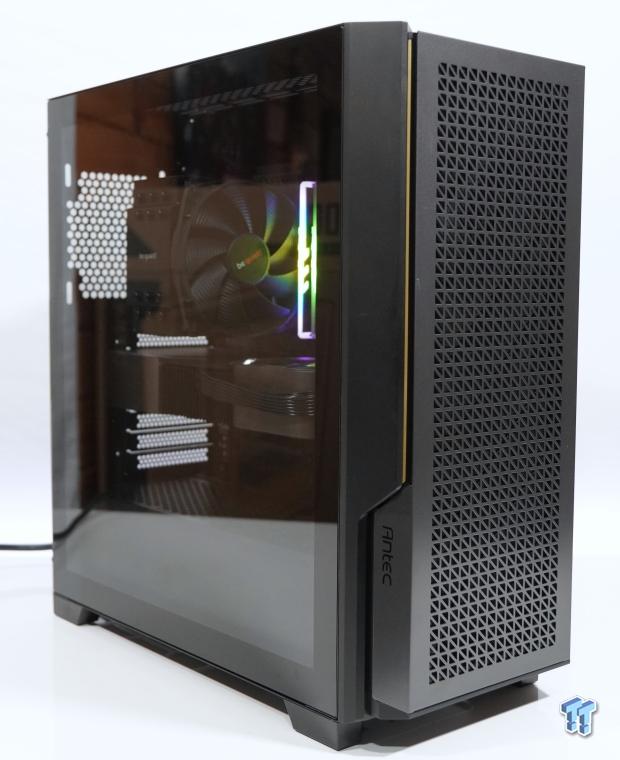
And just like that, the build is done in the Antec P20C. This came out just as easy as when I built in the DP505 - easy peasy.
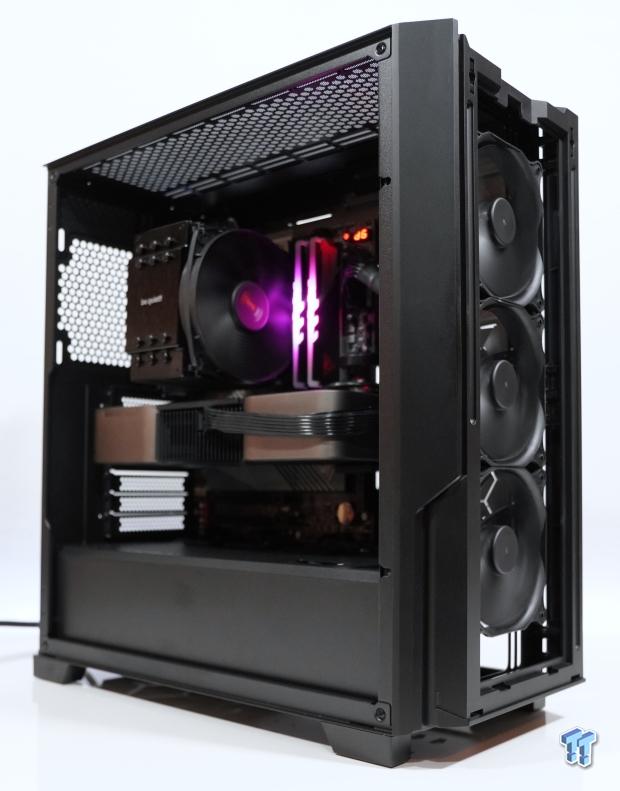
Opting for positive air pressure orientation, since the P20C was shipped like that, I decided to embrace it. I also chose to continue using an air cooler, and I was surprised that temps were held in check compared to my regular go-to, an AIO cooler. The Intel Core i5 12600K idled at a chilly 31C, while the NVIDIA GeForce RTX 3090 FE warmed up a tad to 50C, albeit with no fans spinning up, all this in an 18C ambient temperature.
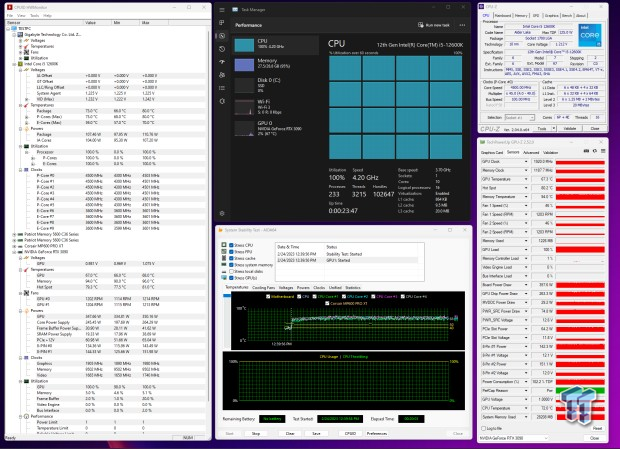
Loaded up, the P20C handled things well. Note that the fans were run at 100%, and they were very quiet! The Intel Core i5 12600K did get a little toasty at a max temp of 80C, but it was air-cooled, which was quite good. On the other hand, the NVIDIA GeForce RTX 3090 FE barely heated up from its 50C idle to about 68C load. Very nice.
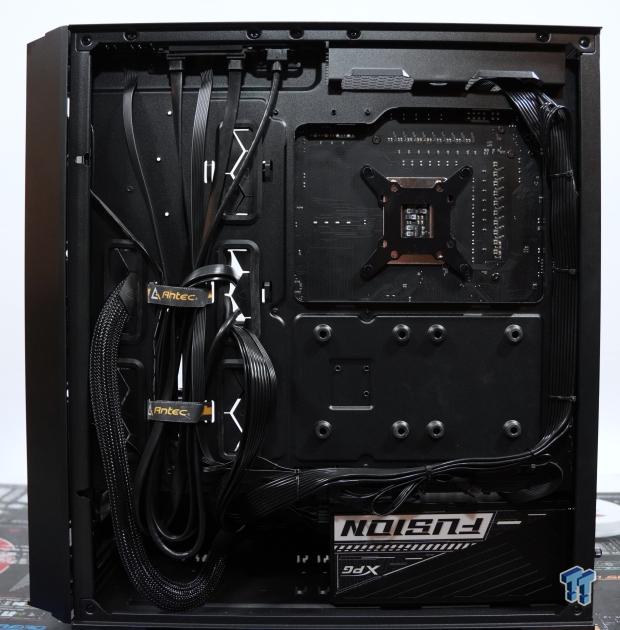
On the cable management front, the backside of the P20C looks neat with two velcro tie-down points. I also removed the 3.5" HDD bracket to make room for the XPG Fusion 1600w ATX 3.0 PSU, review coming soon. The rear panel also went back on without a hitch.
In conclusion, the Antec P20C, just like the DP505 before it, did very well. Having the ability to have a wide variety of cooling options, one of which supports two 360mm radiators simultaneously, is an excellent value at its price point of $110.
For someone looking for performance first with no RGB, the Antec P20C gets the nod.

